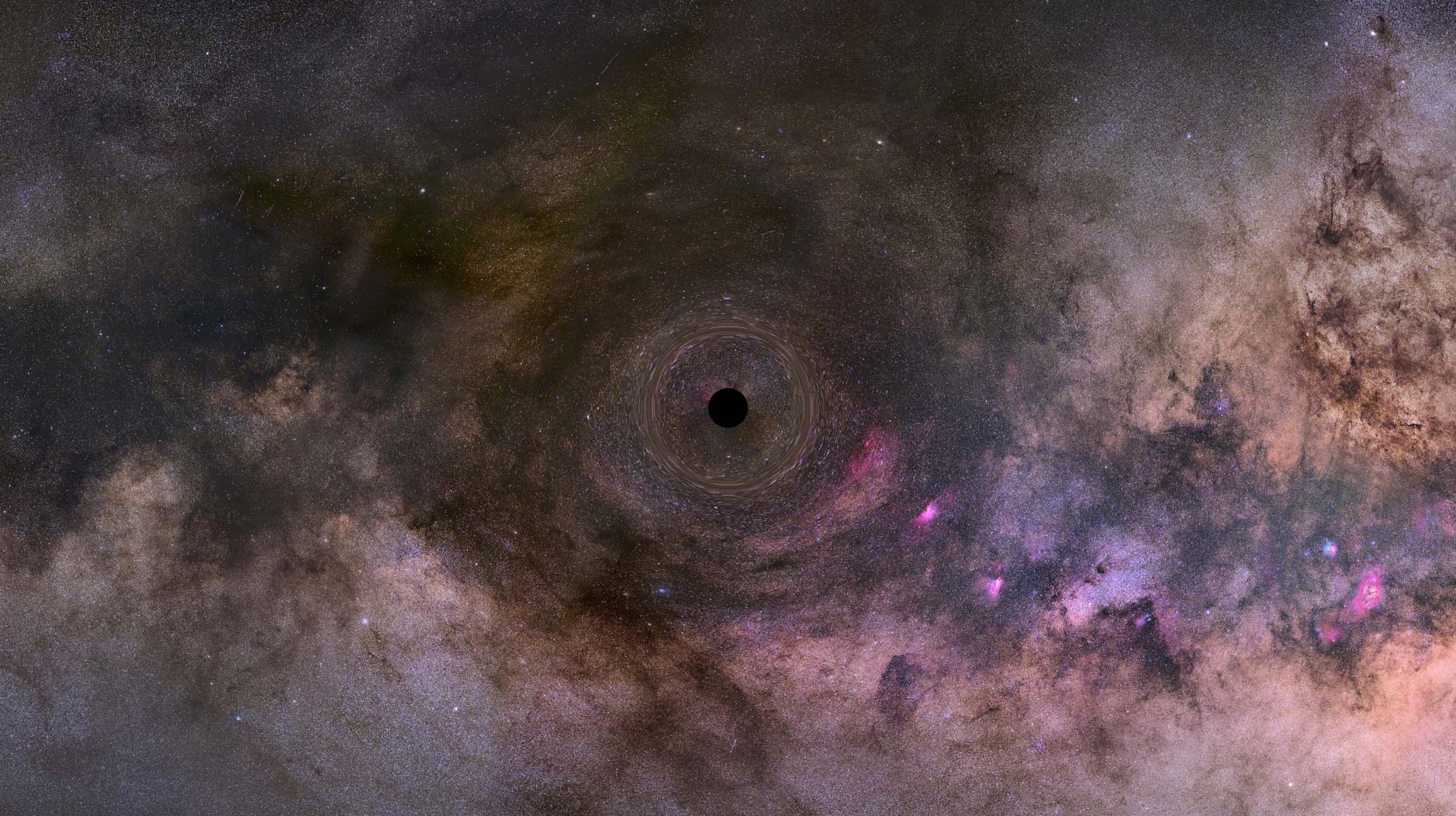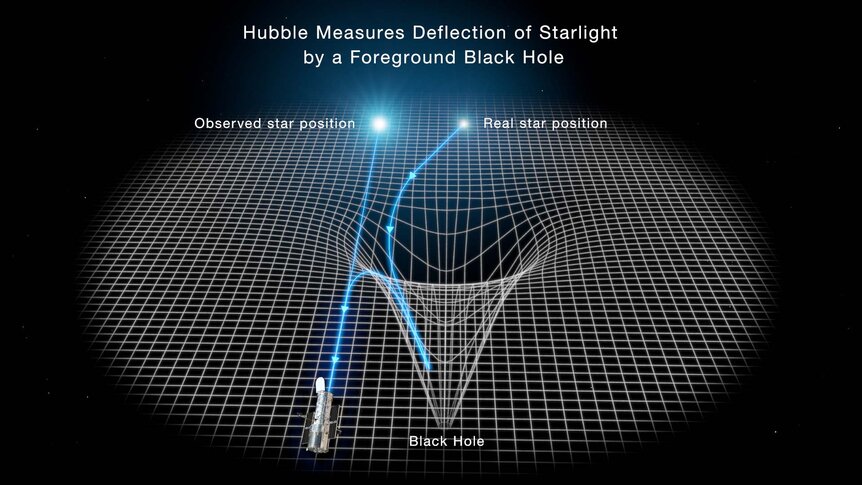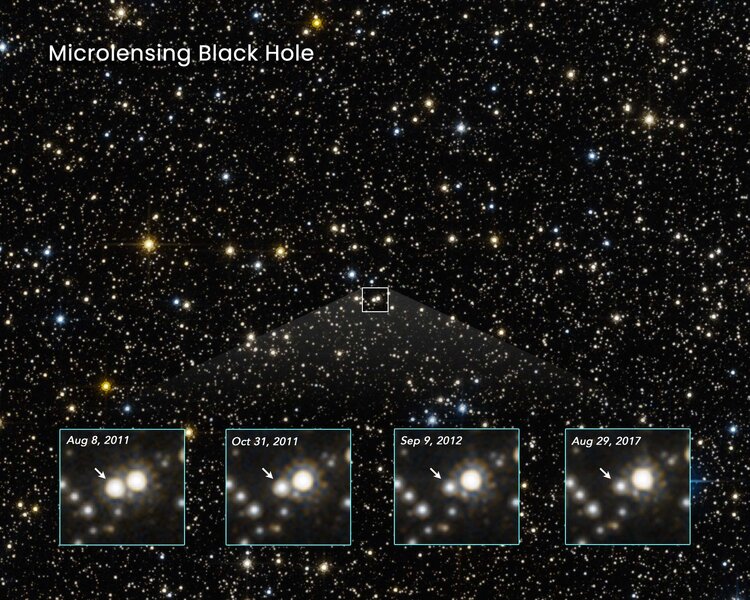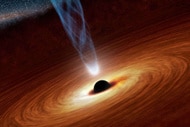Create a free profile to get unlimited access to exclusive videos, sweepstakes, and more!
Hubble spies what may be a rogue black hole just 5,000 light years away
The problem is we're not sure it's really a black hole.

Using a combination of huge ground-based telescopic surveys and the keen vision of Hubble Space Telescope, two teams of astronomers have found what may be — may be — a rogue black hole zipping through space about 5,000 light years from Earth.
The science of this is cool, and even more fun is that the two teams disagree with each other over some very fundamental aspects of this. So it’s not clear what’s happening here.
First, a note: I wrote about this in February 2022 when one of the teams put their at the time not yet peer-reviewed paper online. With the publication of the second paper things have changed, though, which is detailed below. [Link to paper 1, link to paper 2]
The discovery relies on what’s called gravitational lensing. I’ve written about this before:
Any object with mass — a galaxy, a star, you, me — bends space, literally warps it. We perceive that bending as gravity. If you shoot a rocket past the Moon, the gravity of the Moon bends the path of that rocket.
This happens with light, too. Like a car following a curve in the road, a photon (a particle of light) traveling through the Universe will have its path slightly bent this way and that as it passes by massive objects. The more massive the object (and the closer the photon flies past it) the more the light gets bent. We call objects like these gravitational lenses, because a lens is an object that bends light.
Galaxies are massive, and can bend light from galaxies even farther away. That’s lensing on a huge scale. But smaller objects like stars and planets can do this too, and we call them microlenses. The stronger the gravity the more intense the event, which means they can be seen even better from things like neutron stars and black holes.
These events are somewhat rare, so the more distant stars you can see at once the better the odds of seeing one. Several surveys over the years have been done looking at places like the center of our Milky Way galaxy, where stars are packed together pretty closely.
In 2011 two of these surveys spotted a lensing event; One is called OGLE, for the Optical Gravitational Lens Experiment, and the other MOA, for Microlensing Observations in Astrophysics. They gave it different designations — MOA-2011-BLG191 and OGLE-2011-BLG-0462 — so I’ll just call it “the event”.
The star lensed in the event is a faint, reddish star probably between 20,000 and 26,000 light years from Earth, between us and the galactic center. It was seen to brighten by a factor of from 15 to 100, depending on the color measured and the observatory used, and then fade. The whole thing took about 250 – 300 days, which is much longer than a usual lens. Given how sharply the brightness peaks, this implies it was a very small source with very strong gravity. Hmmmm.
Importantly, the star didn’t change color during the event. If the lensing object had been a star, its own color would have added to the background star’s color, changing it. Since no color change was seen, this strongly implies the lensing object was not emitting light.
Critically, the mass, distance, and velocity of the foreground lensing object can be found by looking at how the brightness of the star changes over time as well as how much its light was deflected by the lens. The surveys give the former characteristics, but the deflection is so small that Hubble had to be used to measure it. Even then there are issues.
The two teams of astronomers used somewhat different methods to look at the data; in fact one team used some observations by Hubble in 2021 that the other team didn’t. They agree on many general basics of the event: How long it took, for example, how far away the lensing object is — very roughly 5,000 light years — and the fact that it’s a compact stellar-mass object.
But then they diverge.
One team gets a mass for the object of 7.1 ± 1.3 times the mass of the Sun. The only thing that could have that much mass is a black hole, and in fact say their detection of the black hole is “unambiguous”.
However, the other team gets a lower mass range of 1.6 – 4.4 times the Sun’s. At the high end, yes indeed that’s a black hole. But at the low end of that range the object could be a neutron star! They cannot say one way or another.
So which is it? We don’t know. So it’s impossible to state firmly at this time.
It gets worse. Using Hubble to look a the deflection of the star’s apparent position due to the lens distortion, they get not just different numbers but they see it moving in different directions. Oversimplifying it a bit, one team saw the star’s position move slightly east, the other west. That’s troubling. The motion is incredibly small, just about 1 milliarcsecond, which is very difficult even with Hubble to measure and prone to uncertainties.
They also get different velocities for the lens through space; one team clocked it at 45 kilometers per second, the other at less than 30.
I have to admit, these numbers are discrepant enough to get my skeptical sense tingling. Not that I think the event isn’t real; it definitely is. But the precise characteristics of what did the lensing are something I think we need to be a bit more circumspect about. It might be a black hole, but it might be a neutron star.
One team is looking to use an additional set of Hubble observations to see if they can tighten things up, which is good. The problem is you can’t repeat an event like this, so more observations made now won’t necessarily help. The exception would be if a very deep X-ray observation was made; black holes and neutron stars emit X-rays in different ways, and it’s possible, though by no means certain, that could help differentiate the two.
So for now this remains a mystery, if an exciting one. And the good news is it shows that multiple observations with multiple observatories can in theory be used to track down what’s causing these events. It also shows it’s very much not easy. Hopefully future events seen will be able to make firmer statements.




























